
Hope for a huge, ancient and imperilled fish
First Nations are leading efforts to make sure lake sturgeon can find a home in...
This story is part of Going with the Flow, a series that dives into how restoring nature can help with B.C.’s flood problems — and what’s stopping us from doing it.
Examine the narrow patches of grass and trees lining a residential street in Vancouver’s Mount Pleasant neighbourhood and you’re sure to find signs of life.
There may be spiders, such as the cross orbweaver with its orange body and fuzzy head, a couple different types of lichen, a jewelled amanita mushroom with a light yellow cap or fuzzy-horned bumble bees. Snails, stinkbugs and slugs. And, in the broader area, 22 species of birds: a Cooper’s hawk, an eagle, crows, starlings and pigeons.
A group of citizen scientists has been recording sightings of each of these plants, insects and birds along a section of St. George Street over the last several months — part of a hyperlocal biodiversity monitoring effort.
Next year, the city will replace the pavement along four blocks on the east side of the street, developing a “rainway” with a series of gardens, streambeds and small dams. These will capture and slow some of the rainfall that rushes downhill over impervious pavement.
Rain falls more than 160 days a year in Vancouver. When the rainway is complete, rather than flowing into catch basins and the network of underground pipes that usually carry rainwater runoff to the sewage treatment plant — or too often straight into False Creek — much of that water will percolate into the ground through the gardens or rocky streambeds instead.
“My hope is that it gets replicated in different locations across the city, but other cities as well,” Rita Wong, a long-time community champion of the project, said in an interview.
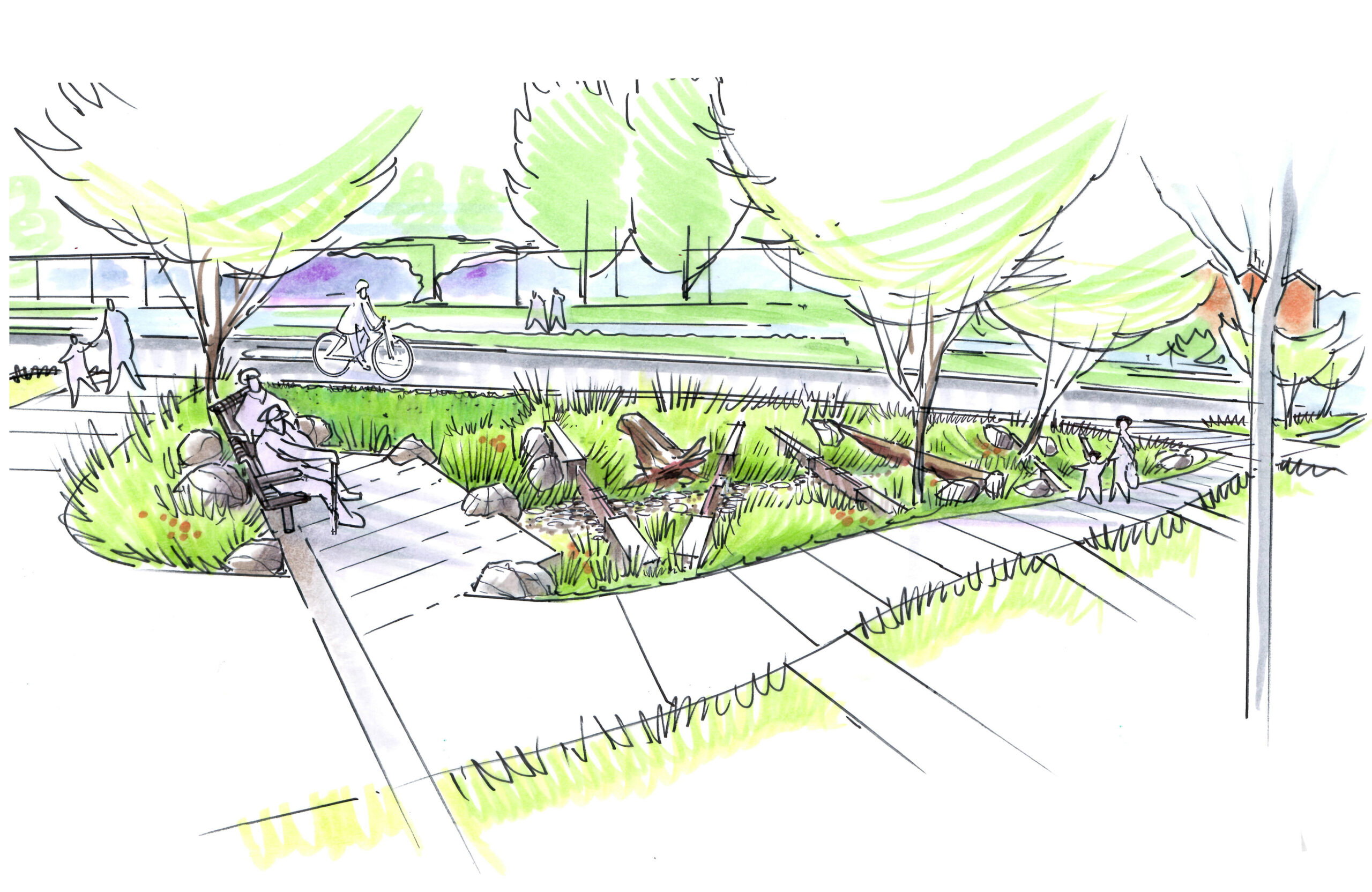
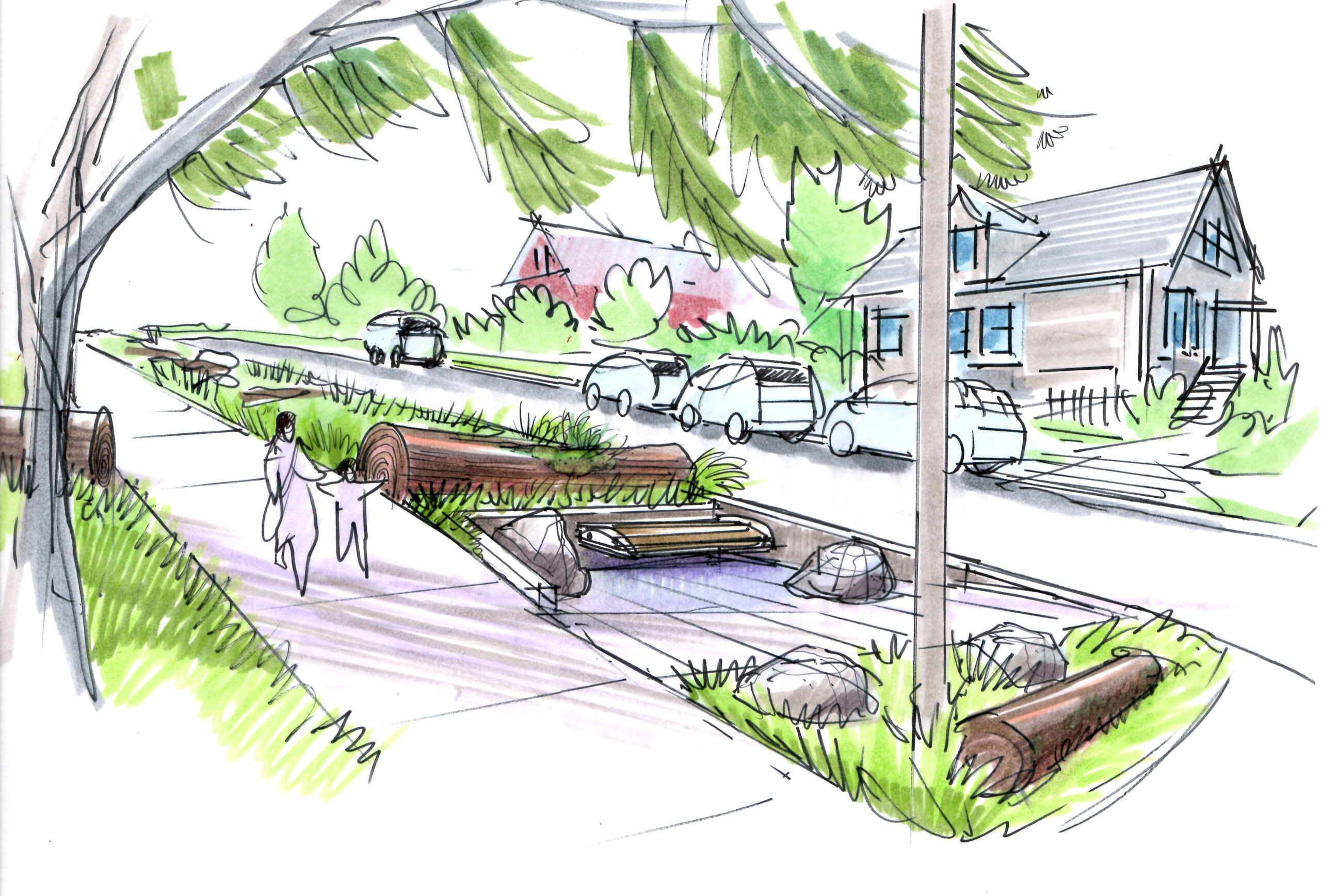
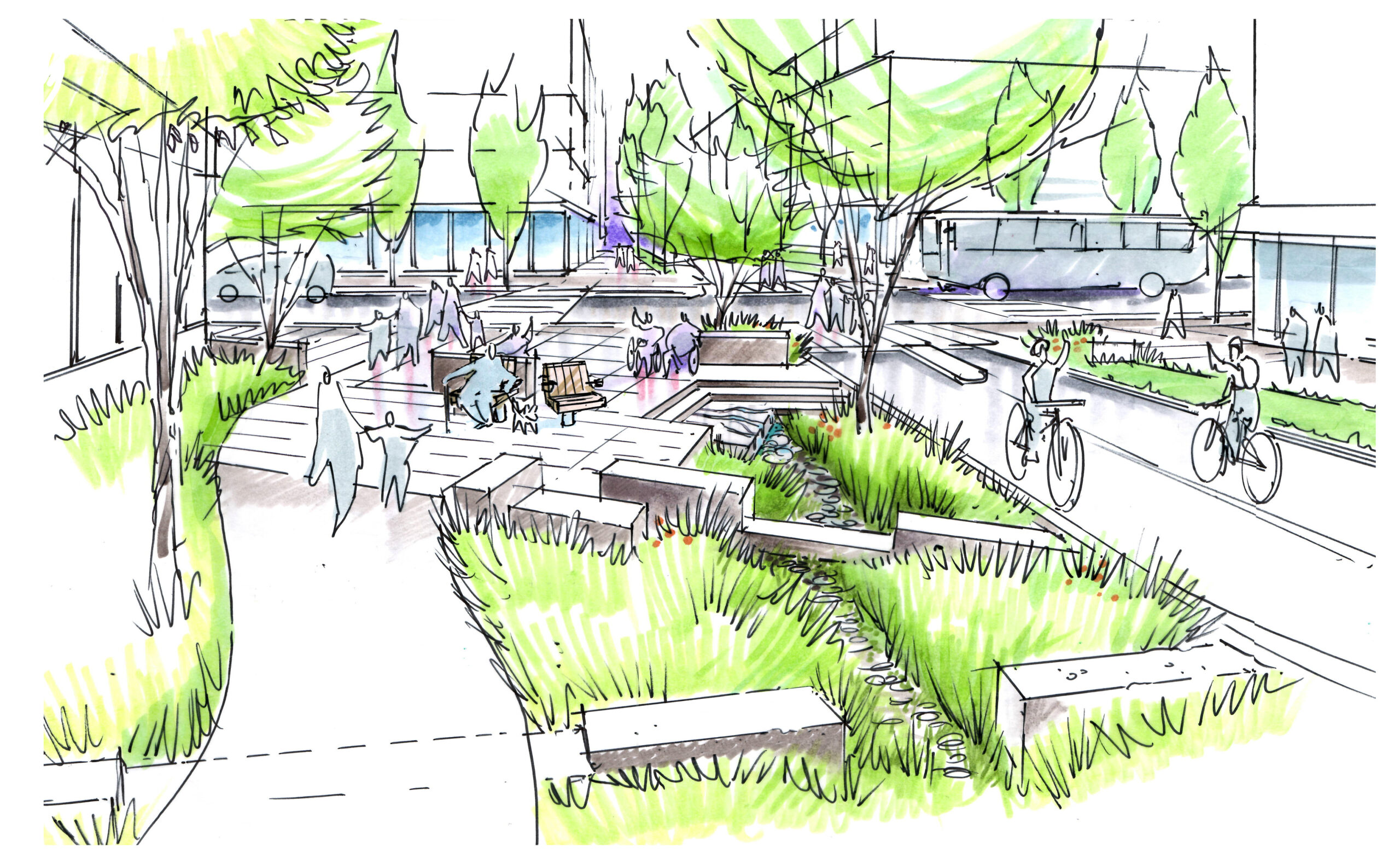
Not everyone who lives nearby is as supportive of the project, however. Some are concerned about the loss of parking as well as potential impacts on emergency vehicles, garbage pick up and deliveries of new car-free areas.
The rainway isn’t the first green rainwater infrastructure project the City of Vancouver has undertaken, but it will be among the largest. The project, including street reconstruction, the green rainwater infrastructure and new seating areas, is currently expected to cost between $5 million and $6 million, according to the city.
City staff have billed the project as a showcase for the benefits of nature-based solutions to the climate and biodiversity crises, offering a model that could be replicated elsewhere. It’s also a chance to carve a bigger space for nature within the urban maze of asphalt and concrete.
“My hope for the rainway is that we would someday hear frogs again, that we would have conditions that are more conducive for biodiversity,” said Wong, a poet and professor at Emily Carr University.
By 2050, Vancouver is expected to see more rain during the fall, winter, and spring months due to human-caused climate change. Major storms could see 63 per cent more rainfall across the city.
During heavy rainfall, some of the water runoff from city streets — and any pollutants it picks up — flows directly from the city’s stormwater pipes into local waterways bodies.
In some cases, it’s not just rainwater rushing into False Creek or Burrard Inlet — it’s sewage too. The city still has some combined sewers — pipes that carry both sewage from homes and businesses as well as rainwater runoff from city streets. During heavy rains, these combined sewers overflow into nearby waterways to protect the sewage treatment plants from being flooded.
“Combined sewer overflows happen really, really regularly,” Sylvie Spraakman, a senior engineer in the City of Vancouver’s green infrastructure branch, said.
In 2020 alone, over 44 million cubic metres of untreated sewage and rainwater runoff overflowed into waterways in the Metro Vancouver area, according to Environment and Climate Change Canada data.

With the threat of such deluges looming in the future, the City of Vancouver developed its rain city strategy, building on the city’s climate change adaptation strategy developed in 2012. The strategy, released in 2019, aims to improve local water quality, make the city more resilient to climate change and make Vancouver a more liveable city by improving urban ecosystems.
In line with the rain city strategy, green rainwater infrastructure, such as the new rainway, incorporates both nature and engineering to better manage water: to slow its movement and filter it before it reaches local waterways.
“In terms of climate change, we really need to be able to slow down the water to absorb it, to make friends with it, rather than trying to just divert it out of here quickly,” Wong said.
That’s what the rainway aims to do.
As rain falls on the gardens, rather than rolling away, it will linger and sink into the soils. During the heaviest storms, when water starts to fill up the constructed stream bed, small dams will help slow it down, giving the ground a chance to absorb it. Underground infrastructure especially in the steep sections of the street will offer added water storage until it can be absorbed into the ground.
“Before we paved our roads, we would have had a lot more soft surfaces around that were porous and could absorb that rainwater,” Spraakman said. “So really, we’re just going back and adding in those porous surfaces that we took away a little while ago.”
“It’s really a marvel of engineering and nature blended together that makes this work,” Julie McManus, a planner in the city’s green infrastructure branch, added.
The rainway has been designed to absorb about 90 per cent of the rain that’s likely to run through it each year.
At the same time, the plants in the rainway will help filter pollutants from the water that flows through it, so it’s cleaner when it does eventually seep into local waterways.
The project was initially conceived of and pushed forward by a group of community volunteers as a nod to a long-buried stream that once flowed through the area.
Wait for a quiet moment, turn your ear towards the manhole covers along St. George Street near East 6th or East 5th avenues and you can still hear water flowing underground even when the street is dry, Wong said.
“When it’s raining, you can totally see it above ground, it’s just rushing down off the cement really fast,” she said.
The rainway has been more than a decade in the making. A street party in 2010 and parade in 2011 offered community members a chance to learn about the lost stream, according to a community website about the project. There were community design workshops in 2011 and 2012, and in 2013 the rainway was officially adopted into the Mount Pleasant community plan. Six years later, Vancouver’s rain city strategy was approved, and the year after that the city committed funds for rainway planning.
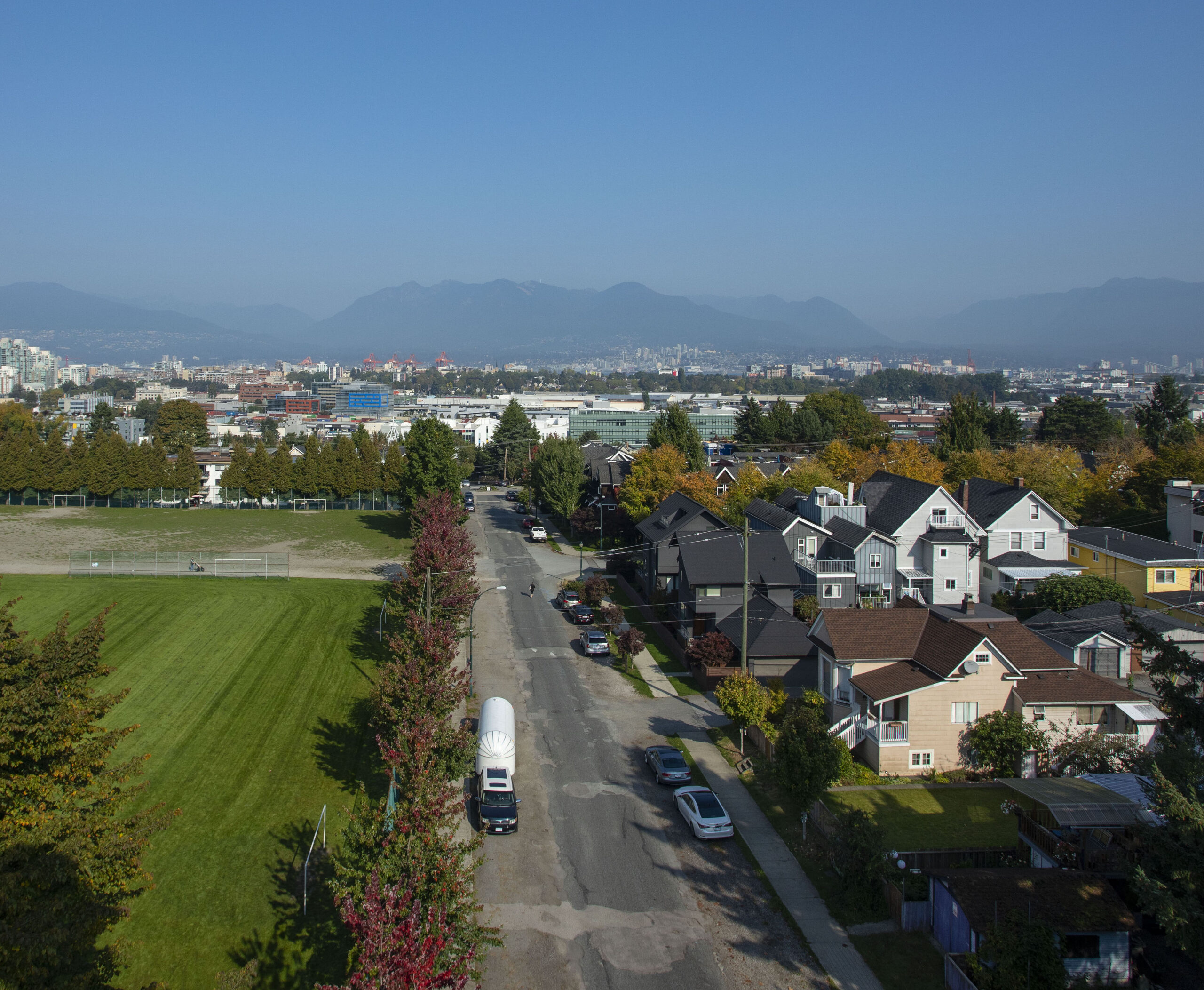
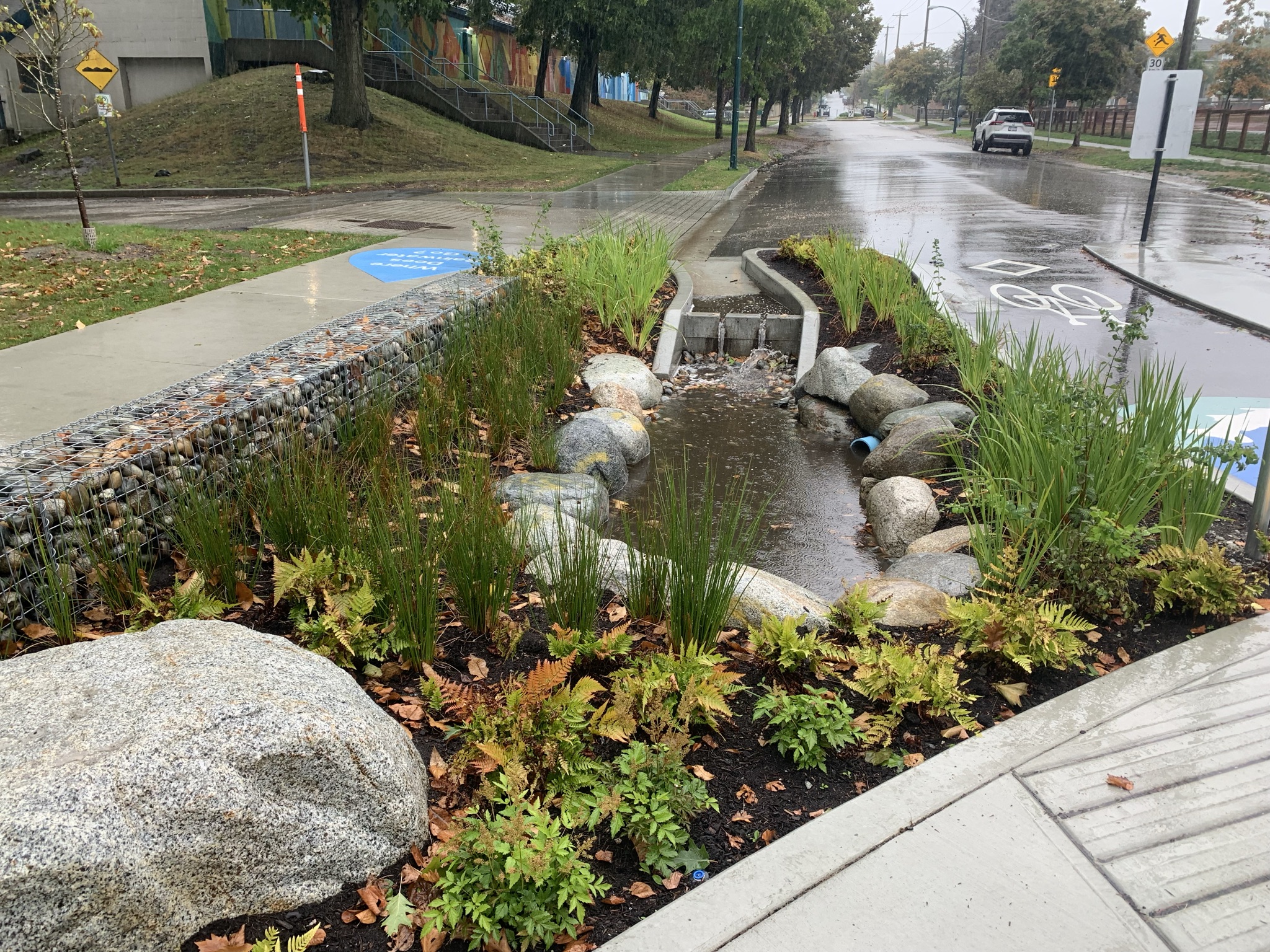
The city process itself was guided by a public advisory committee and involved a series of public engagements on the vision and eventually design concepts for the rainway.
According to the city, 157 people responded to a survey about four design concept options. The majority of respondents supported having car-free sections along the street as well as the overall “flow” design for the rainway. Though some nearby residents preferred the option that would retain the most parking.
On a sunny afternoon in September, The Narwhal spoke to a handful of residents who live along St. George Street. Some were supportive of the project, at least in part, with one neighbour saying the rainway could encourage people to rethink their driving habits and another citing its benefits for drainage. Others raised concerns about the loss of street parking and the prospect of elderly visitors or residents having to walk further to their homes. Residents have also questioned the impact on emergency vehicle access to the street and potential challenges for garbage pick up and home deliveries.
According to the city’s engagement report, the city undertook a parking study in the summer of 2021 and found fewer cars parked along St. George Street than adjoining streets, informing their decision.
Currently, parking in the area is largely unregulated, meaning anyone, not just residents with parking permits, can park on the street. Once the rainway is built, just one side of one block along the four-block rainway will be available for parking. The city said it would explore requiring parking permits if that’s what residents want.
As for concerns about emergency vehicle access or impacts to garbage pick up, the city’s engagement report said it worked with Vancouver Fire and Rescue Services to ensure emergency vehicles would still have “immediate access” to car free areas. The report said curbs will be designed to accommodate turning garbage trucks and emergency vehicles and delivery drivers will be able to temporarily park on side streets.
Wong said parking concerns had been an obstacle but “other things are important like clean air, a liveable city, cooling the planet.”
Alongside absorbing rainfall, the rainway gardens could offer enhanced habitat for diverse plants and animals.
“People often think urban areas are these degraded spaces and just a small patch of habitat versus a large national park,” said Sheila Colla, an ecologist and York University research chair in interdisciplinary conservation science.
In reality, there is a lot of biodiversity in urban spaces.
For wild bees and other pollinators, in particular, urban green spaces offer much needed refuge from threats such as climate change or pesticides.
There tends to be less pesticide use in cities than in agricultural areas, Colla said. And, municipalities tend to mitigate some of the impacts of climate change, such as more frequent drought and heatwaves. Rather than being left to shrivel and wilt, municipal staff will water plants during dry periods, she explained, ensuring that habitat remains available to the species that rely on it.
In Canada, about a quarter of wild bumblebees alone are at-risk of extinction, making such urban refuges vital to their conservation, Colla added.
Projects like the new rainway in Vancouver can help create habitat to support the diversity of species found in urban areas, according to Colla. And “the more species you have in a system, the more resilient that system is to environmental stressors,” she said.

As much as possible, the city is planning to use native plants in the rainway. They’ll have to be hardy to filter any pollutants rainwater may pick up from the street, such as hydrocarbons, bacteria or metals. The plan is these new gardens will offer better food and habitat for the wildlife already living along the roadside and others that may be drawn to the area.
“That’s part of the reason why we embarked on these bio blitzes to get an idea of what’s already here,” McManus said.
The city has already hosted three ‘bio blitzes’ — community events to identify as many species as possible in a limited window of time. The final pre-construction bio blitz is planned for Oct. 1.
Eventually, the St. George Street rainway could one day extend another several blocks, McManus said.
Wong said she is a bit nervous about the project. She doesn’t want to see the rainway become a gentrification project that causes any further increases to the cost of living in a city where housing prices are already a major burden.
But she’s excited too, to “see more water being held in the land.”
“There’s been a lot of damage that’s been done in the city, and a lot of healing that still needs to happen in terms of our relationship with the water,” she said.
Get the inside scoop on The Narwhal’s environment and climate reporting by signing up for our free newsletter. A $335 million funding commitment to fund...
Continue reading
First Nations are leading efforts to make sure lake sturgeon can find a home in...

We’re excited to share that an investigation by The Narwhal is a finalist for the...

A new documentary, Nechako: It Will Be a Big River Again, dives into how two...
